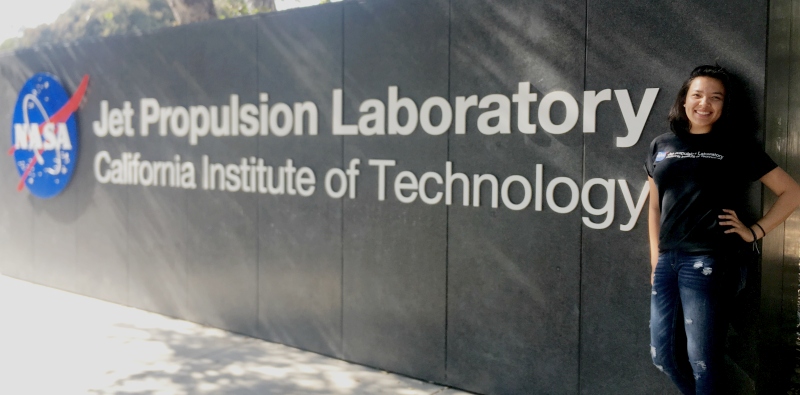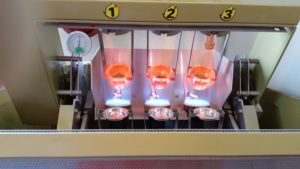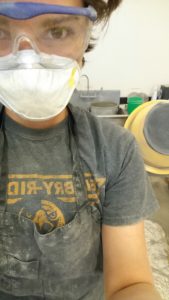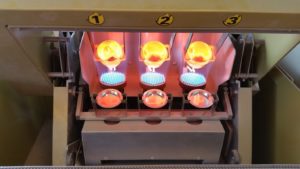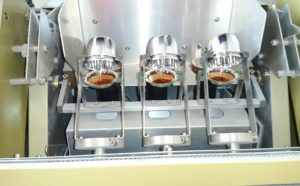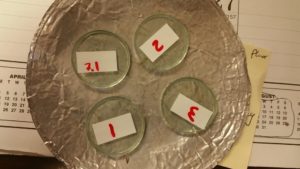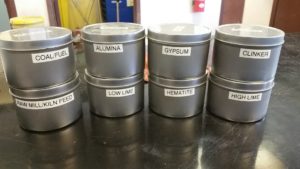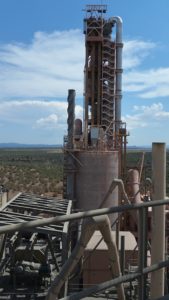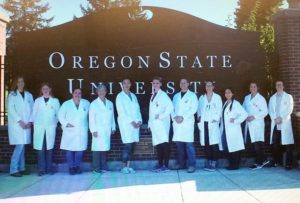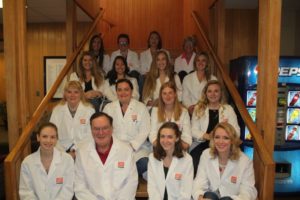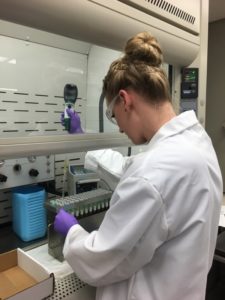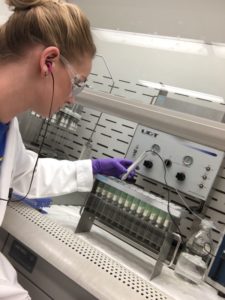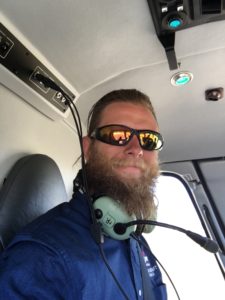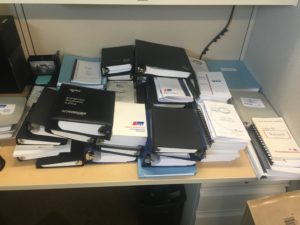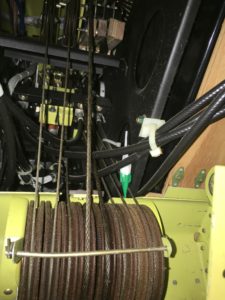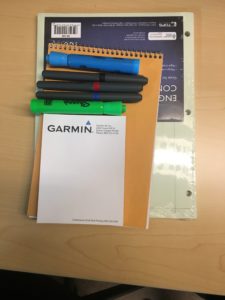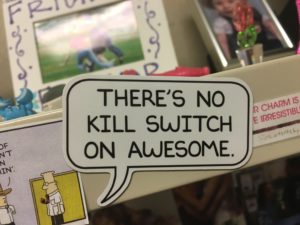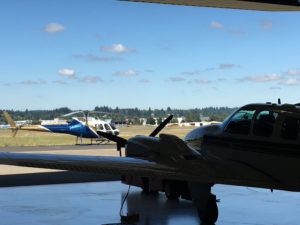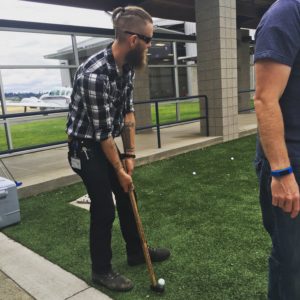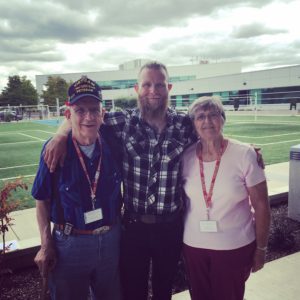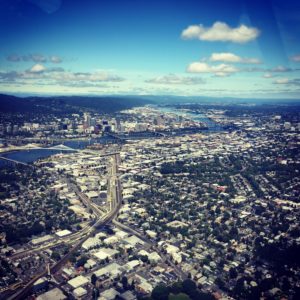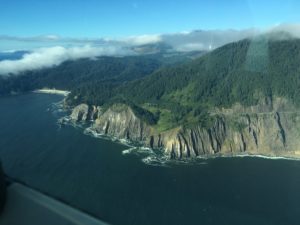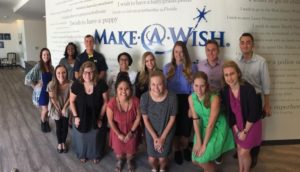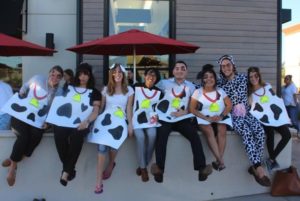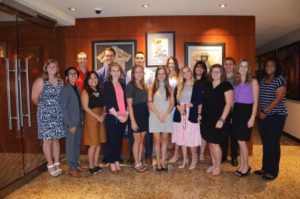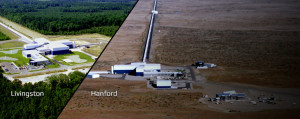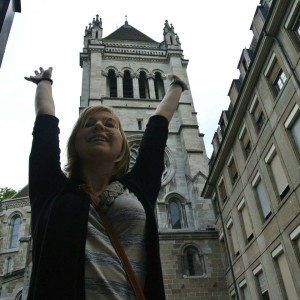by guest blogger Gleb A. Liashedko, Sophomore (class of 2019)
Aviation Business Administration (minor in Industrial Organizational Psychology)
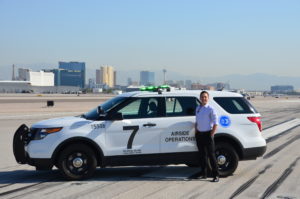 This summer I interned at McCarran International Airport (LAS) in Las Vegas, Nevada. LAS is the 8th busiest airport in the nation and is the hub into Las Vegas. I was hired on as a “Management Intern” for the airport. My supervisor was the Assistant Director of Aviation for Airside Operations.
This summer I interned at McCarran International Airport (LAS) in Las Vegas, Nevada. LAS is the 8th busiest airport in the nation and is the hub into Las Vegas. I was hired on as a “Management Intern” for the airport. My supervisor was the Assistant Director of Aviation for Airside Operations.
This experience has been an incredible look into the “behind the scenes of an airport.” Throughout the summer, I had a unique opportunity to shadow most of airport divisions. Every week was a different department and a different shift. My favorite divisions were: Airport Operations Coordinators, the Airport Control Center as well as LAS Ramp Control.
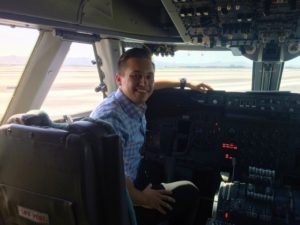 In addition to shadowing airport divisions, I also did a few projects for the airport:
In addition to shadowing airport divisions, I also did a few projects for the airport:
• Holding Pads Refurbishment Project – I connected the resources together to come up with a plan on how the airport plans to replace asphalt holding pads to concrete. In the end made a presentation and timeline for the FAA, Airport Operations Coordinators, Airfield Maintenance as well as the contractors involved.
• Everbridge presentation to the airport director – Researched a new program that the Airport Control Center wants to utilize for their mass notification communication and created a presentation that was presented to the airport director.
• Assisted in the implementation of the airport-wide survey for nearly 1,400 employees. Also participated in physically conducing the survey.
• Conducted a Ramp Control Efficiency Study for the airport which provided written recommendations for the FAA as well as LAS Ramp Control to improve operations. Provided statistical data of the ramp control efficiency. Conducted this study with my Intern counterpart Adin Herzog.
How did I get selected?
I heard about the opportunity from Dr. Greenman from the Business Department. After I submitted my application, LAS immediately reached out to me to schedule an interview. I reached out to the Career Services (Judy Segner) who critiqued my resume and gave me great advice for the interview. The interview was conducted via Facetime. Interview went very well especially because two Embry-Riddle alumni were on the interview committee.
Did I apply any learning from ERAU?
There were a few moments during the summer where I thought to myself “Oh, I wish I would have paid more attention to this particular topic in class.” Every single class that I took my freshmen year had been applicable to the work that I did—especially excel. If I can recommend something for future interns,k it’s pay attention in your excel class, you’re going to use it one way or another.
I was able to apply my research skills on a few projects throughout the semester. The biggest project of the summer had been the McCarran International Airport Ramp Control Efficiency Study. I conducted the study with my intern counter-part Adin Herzog. I had the ability to interview personnel, collect data and provide recommendations to the airport from the conclusion of the report.
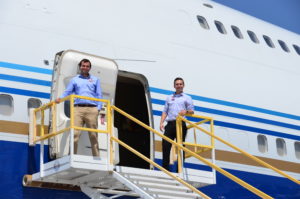 What was the best part?
What was the best part?
Having the ability to shadow every division of the airport and get real hands on experience. From driving on the runway during rush hour at nation’s 8th busiest airport to painting taxiway lines at 4am in the morning to giving aircraft pushback and taxi instructions from Ramp Control Tower.
What surprised me?
There were a lot of things that surprised me during my experience. Seeing behind, the scenes of an airport is a very rare opportunity. What surprised me the most is the airport culture. It’s like one big family. Everyone takes care of each other. A good example of this was on my birthday this summer. The supervisors/managers of the division I was with (Airside Operations) had called an important afternoon meeting. Because of the urgency that was emphasized, I hurried to the meeting with my notepad and pen. As I walk into the meeting, the entire room starts singing the Happy Birthday song to me. I was really happily shocked by this. After they were done singing, the Airfield Manager said: “Gleb, our only agenda item for today is your birthday and the ice cream cake!” This was really touching moment. How the people that I’ve known for such a short time went out of their way to get me a custom cake and arrange this little meeting just for me.
How does having an internship enhance my college experience?
Since coming back to school, I am now paying attention more to what my professors are teaching. If the professor says that you will use the learning obtained in class in the industry, I guarantee you will! I can also relate many of the things I learned back into the classroom. Time management, deadlines as well as peer interactions are some of the things which are important both in school and in the workplace. You must be able to work in a team while taking an initiative to go above and beyond with your work. Meeting deadlines is huge, especially when time is money.
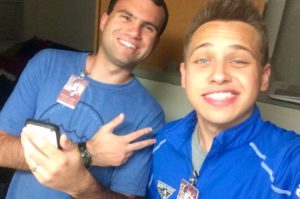 As I start my sophomore year of college I can appreciate the learning in the classroom. I know that at some point in my career, the things that I will learn in the classroom (event little things) will be applicable to what happens in the workplace.
As I start my sophomore year of college I can appreciate the learning in the classroom. I know that at some point in my career, the things that I will learn in the classroom (event little things) will be applicable to what happens in the workplace.
This has truly been an incredible experience. I would choose this over summer fun in a heartbeat. Definitely one of the best summers yet.
